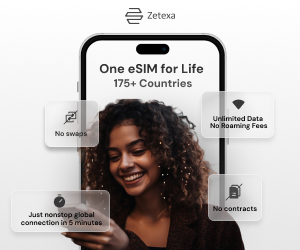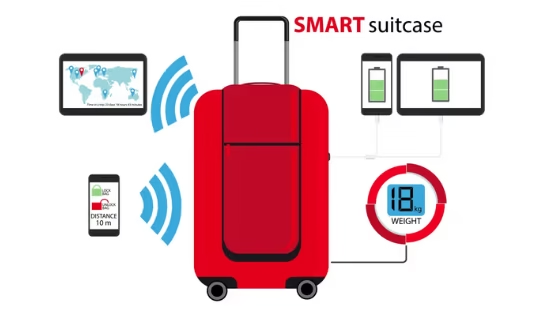
Why Telecoms Lobby So Hard Against eSIMs — and What It Means for Your Next Trip
If you’ve been following the travel connectivity space closely (and if you’re here on Alertify, you probably have), you’ve noticed that eSIMs have gone from niche tech curiosity to mainstream necessity almost overnight. Apple’s iPhone 14 in the U.S. killed the physical SIM slot. Samsung, Google, and Huawei are doubling down. Startups are popping up offering eSIMs with coverage in 200+ countries.
And yet… if eSIMs are so convenient, why do so many telecom operators seem to drag their feet? Why is it still a hassle in some markets to activate one? Why do you hear stories about carriers putting up roadblocks, burying eSIM options deep in their apps, or charging extra fees?
That’s not an accident. Telecoms lobby hard against eSIM adoption — and it has everything to do with control, profit margins, and, yes, your next trip abroad.
Let’s pull back the curtain.
Why eSIMs Scare Traditional Telecoms
To understand the lobbying, you have to understand the business model. For decades, carriers built empires on three pillars:
- Lock-in — They controlled the little piece of plastic you needed to use their network. Switching carriers meant a trip to the shop, paperwork, maybe even penalties. Inertia worked in their favor.
- Roaming revenues — Roaming is a goldmine. A traveler crossing a border often racks up costs that have little to do with the real cost of providing data. Many operators see roaming as pure margin.
- Distribution power — Telecoms owned the retail shops, the SIM cards, and the partnerships with device makers.
Now, eSIMs break all three.
- With an eSIM, you can download a new plan in minutes without leaving your hotel room. No more lining up at the airport kiosk. No more staying “loyal” to your home provider because swapping is a pain.
- Roaming gets disrupted because you can switch to a local or global eSIM in seconds, often at a fraction of the cost.
- The retail monopoly weakens because suddenly, that little piece of plastic isn’t needed. Startups with no shops, just an app, can sell connectivity globally.
For telecom giants, that’s terrifying.
The Lobbying Playbook
Telecoms aren’t shy about protecting their turf. Here’s what the playbook often looks like behind closed doors:
- Regulatory pressure: Lobbying regulators to delay or water down eSIM mandates. In some countries, regulators technically allow eSIM, but the implementation rules are so vague that carriers drag their feet for years.
- Technical friction: Making the activation process clunky. Some carriers force you to visit a store just to get a QR code. Others limit how many times you can switch an eSIM. All of this keeps customers from freely jumping between providers.
- Pricing games: Charging extra for eSIM profiles, or bundling them only with premium plans, while keeping physical SIMs cheap or free.
- Marketing spin: Painting eSIM as “complicated” or “not secure” to nudge mainstream customers back toward the old way.
The goal isn’t to stop eSIMs entirely (that ship has sailed) but to slow adoption just enough to squeeze a few more years of high-margin roaming and customer lock-in.
What This Means for Travelers
So how does all this lobbying and behind-the-scenes maneuvering affect you, the traveler booking your next trip?
- Limited local options — In many destinations, you’ll find that local carriers technically support eSIM, but it’s hard to access. That means startups like Airalo, Bnesim, or Nomad often fill the gap.
- Roaming traps — Your home provider may quietly “offer” eSIMs but steer you toward their expensive roaming packages. It’s not that you don’t have alternatives — it’s that they don’t make it easy for you to find them.
- Inconsistent experiences — In one country, you can activate a local eSIM in two minutes with an app. In another, you’ll still be told to visit a store with your passport. That patchwork is largely the result of how hard telecoms lobby to control rollout.
- Confusing information — Carriers sometimes obscure how eSIMs actually work. Travelers often arrive at airports not even realizing they could have downloaded an eSIM ahead of time and saved 70% on roaming costs.
The Big Shift Is Inevitable
Here’s the thing: no amount of lobbying will stop the shift forever. Apple’s move to eSIM-only phones in the U.S. sent shockwaves through the industry. Rumors suggest more markets will follow. As hardware pushes forward, carriers will eventually have no choice but to support it. roaming charges with eSIM
The question is how long the delay lasts — and who benefits in the meantime.
For travelers, the delay means friction and confusion. For carriers, it means holding onto old revenue streams. For the growing ecosystem of independent eSIM providers, it means opportunity: they’re the ones stepping in where the big guys drag their feet.
Why This Matters for Your Next Trip
If you’re planning a holiday in Spain, a work trip to Singapore, or even a multi-country backpacking tour, here’s what all this means in practical terms:
- Do your homework before you fly: Don’t assume your carrier’s “travel pass” is your only option. Chances are, an independent eSIM provider has better rates.
- Check device compatibility: Most newer phones support eSIM, but not all. If you’re rocking an older model, you may still need a physical SIM.
- Think flexibility: One of the best perks of eSIM is stacking profiles. You can keep your home number active for WhatsApp and calls, while running a local or regional eSIM for data. Carriers don’t advertise this because it undermines their roaming cash cow.
- Look out for hidden fees: Some telecoms still try to charge for eSIM “activation.” That’s a lobbying hangover, not a technical necessity.
Why Alertify Pays Attention to This
We follow the lobbying battles not just because it’s juicy industry gossip, but because it directly affects how much you’ll pay and how smooth your connectivity will be abroad. When telecoms slow-roll eSIM adoption, it shows up in your trip as hassle, confusion, and higher costs.
By contrast, when regulators push back and force adoption (like the EU did with roaming caps years ago), travelers win big. That’s why we cover these stories — because your data plan shouldn’t cost more than your hotel room.
The Bottom Line about roaming charges with eSIM
Telecoms lobby against eSIMs for one simple reason: they stand to lose billions in roaming and customer lock-in. The longer they can stall, the more they keep travelers in the old system.
But the momentum is unstoppable. Device makers, independent providers, and informed travelers are pushing adoption faster than telecoms can hold it back.
So on your next trip, remember this: if your carrier makes eSIM look complicated, it’s not because the tech is hard. It’s because the business model is.
And as always, Alertify will keep pulling back the curtain so you know where the roadblocks really come from — and how to sidestep them.












